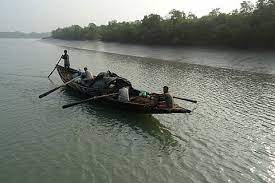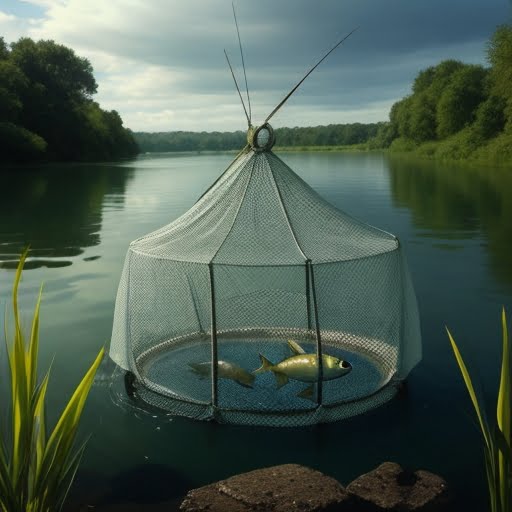Status of Fisheries in India: Freshwater Indian fisheries have played a significant role in the country’s economy, food security, and livelihood generation for centuries. The rich biodiversity of rivers, lakes, and ponds in India has provided a favorable environment for the growth and sustenance of various fish species. In this article, we will explore the past, present, and future status of freshwater Indian fisheries and shed light on the efforts being made to ensure their sustainability.
Historical Overview of Status of fisheries in india
Pre-Independence Era
The pre-independence era witnessed the early foundations of freshwater Indian fisheries. Local communities heavily relied on fishing as a means of subsistence, utilizing traditional methods such as traps, nets, and angling to catch fish. However, during this period, the overall production and management of fisheries remained relatively underdeveloped.
Post-Independence Era
Following India’s independence, the government recognized the immense potential of fisheries as a crucial source of livelihood and a valuable protein-rich food resource. Thus, efforts were initiated to promote the development of the fisheries sector through innovative policies and initiatives. Modern techniques, including the introduction of motorized boats, synthetic nets, and scientific methods for fish breeding and rearing, were embraced, propelling the growth of freshwater Indian fisheries. The post-independence period witnessed a rapid expansion of freshwater aquaculture, especially carp culture, due to the availability of land, water, seed, and feed resources, as well as government support and market demand
- An Indian fishery was under the British policy up to 1947. (Ancient modes & practices of fishing) ‘Status of fisheries in india’
- Around 1950 India experimented with different advanced techniques for boosting the fisheries.
- In 1960, India introduced mechanized boats, trawlers, more efficient nets like purse seine.
- Around 1970, the Indian fisheries with perfection of technology composite fish culture and Aquaculture practices in small tanks and ponds.
- In 1980, advancement of freshwater fisheries started and was observed at all the five major revirine system of India
Current Status of Freshwater Indian Fisheries
Fish Production
Freshwater fish production in India has witnessed remarkable growth over the years, solidifying the nation’s position as the second-largest producer of freshwater fish globally. With an annual production exceeding 7 million metric tons, India has made significant strides in meeting the growing demand for fish. Carp species such as Rohu, Catla, and Mrigal dominate freshwater fish cultivation, contributing to the thriving fish production industry.
Freshwater fisheries in India are the largest and fastest growing sub-sector of the fisheries sector, contributing about 66 percent of the total fish production in 2018-19. India is also the second largest producer of freshwater fish in the world, after China. The major freshwater fish species cultured in India are Indian major carps, exotic carps, catfishes, freshwater prawns, and ornamental fishes. The freshwater fisheries sector provides livelihoods, food security, and income to millions of people, especially in rural areas. However, the sector also faces several challenges, such as declining water quality and quantity, environmental degradation, disease outbreaks, low productivity, inadequate infrastructure, poor marketing, and climate change
Challenges Faced
Despite the impressive progress, freshwater Indian fisheries face a multitude of challenges that threaten their sustainability. Overfishing, habitat degradation, pollution, and the impacts of climate change pose significant risks to fish populations. Invasive species, notably the African catfish, have further disrupted the delicate ecological balance of freshwater ecosystems. Addressing these challenges requires collective efforts and innovative solutions.
Government Initiatives and Policies
To overcome the challenges and ensure the long-term sustainability of freshwater Indian fisheries, the government has implemented several initiatives and policies. ‘Status of fisheries in india’
National Fisheries Development Board (NFDB)
The National Fisheries Development Board (NFDB) plays a pivotal role in the development and management of fisheries resources across India. NFDB actively promotes scientific aquaculture practices, provides training and technical support to fish farmers, and encourages research and development within the sector. Through its initiatives, NFDB empowers fisherfolk and facilitates sustainable growth in the fisheries industry.
National Mission for Protein Supplements (NMPS)
The National Mission for Protein Supplements (NMPS) focuses on enhancing fish production and productivity through scientific and sustainable aquaculture practices. NMPS prioritizes the development of both inland and marine fisheries, creating robust infrastructure and marketing facilities. By improving the accessibility of protein-rich fish, NMPS contributes to enhancing the nutritional well-being of the population. ‘Status of fisheries in india’
Pradhan Mantri Matsya Sampada Yojana (PMMSY)
The Pradhan Mantri Matsya Sampada Yojana (PMMSY) stands as a flagship scheme aimed at transforming the fisheries sector in India. PMMSY seeks to modernize infrastructure, create employment opportunities, attract private investment, and boost fish production. With a focus on developing fishing harbors and providing financial assistance to fish farmers and entrepreneurs, PMMSY sets the stage for a prosperous future in freshwater Indian fisheries.
Sustainable Practices and Conservation Efforts
Recognizing the importance of sustainability and conservation, various initiatives and practices are being implemented in freshwater Indian fisheries. ‘Status of fisheries in india’
Aquaculture and Fish Farming
Aquaculture, or fish farming, has emerged as a sustainable alternative to wild fish capture. This practice involves controlled breeding, rearing, and harvesting of fish in enclosed environments such as ponds, tanks, and enclosures. By reducing pressure on natural fish populations, aquaculture plays a crucial role in meeting the growing demand for fish while ensuring ecological balance and economic stability.
Conservation of Endangered Species
Efforts are underway to conserve and protect endangered freshwater fish species in India. Conservation programs focus on habitat restoration, captive breeding, and raising awareness about the importance of conserving biodiversity. Special attention is given to critically endangered species such as the Indian Trout and Mahseer, safeguarding their existence for future generations. ‘Status of fisheries in india’
Future Prospects and Growth Opportunities
The future of freshwater Indian fisheries holds immense promise, with opportunities for growth and development on the horizon. Freshwater fisheries in India have a huge potential to grow further and meet the increasing domestic and global demand for fish. The future prospects of the sector depend on the adoption of innovative and sustainable practices, such as improved seed and feed quality, genetic improvement, diversification of species, biosecurity measures, water conservation, waste management, value addition, traceability, and certification. The sector also needs to enhance its resilience and adaptation to climate change, by adopting strategies such as climate-smart aquaculture, early warning systems, insurance schemes, and disaster management plans. The sector also requires a conducive policy and institutional environment, with effective coordination, regulation, and extension services, to ensure the socio-economic and environmental sustainability of freshwater fisheries. ‘Status of fisheries in india’
Technological Advancements
Advancements in technology offer new avenues for the growth of freshwater fisheries. Remote sensing and satellite imagery enable the identification of potential fishing zones, aiding fishers in maximizing their catch and optimizing resource utilization. Embracing technology-driven solutions enhances productivity, efficiency, and sustainability within the fisheries sector. ‘Status of fisheries in india’
Export Potential
Freshwater Indian fisheries possess significant export potential, as the demand for Indian freshwater fish continues to rise in international markets. By capitalizing on quality production, adhering to international standards, and fostering strategic partnerships, Indian fish farmers and exporters can tap into lucrative global opportunities, expanding their reach and contributing to the nation’s economic growth. ‘Status of fisheries in india’
Conclusion
Freshwater Indian fisheries embody a captivating tale of growth and resilience, deeply intertwined with the nation’s economy and food security. While challenges persist, the collective efforts of the government, fisherfolk, and various stakeholders pave the way for a sustainable future. By prioritizing conservation, embracing technology, and fostering innovation, freshwater Indian fisheries will continue to thrive, providing nourishment, livelihoods, and economic prosperity for generations to come.







